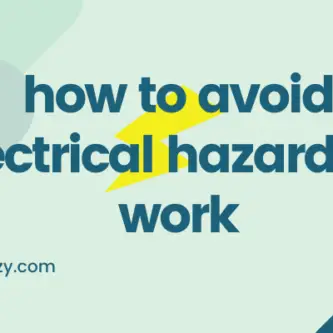Electrical transformers play a crucial role in power distribution systems, converting high-voltage electricity into lower voltage levels that can be safely delivered to homes and businesses.
However, like any piece of equipment, transformers are subject to wear and tear over time. One issue that can arise is rust formation on the transformer’s internal and external components.
Yes, rust can affect electrical transformers by causing damage to the transformer’s components and potentially leading to equipment failure or decreased performance
In this article, we’ll explore the effects of rust on electrical transformers, as well as methods for preventing and addressing rust formation.
Understanding Rust
Rust is a type of corrosion that occurs when iron or steel is exposed to oxygen and moisture over time.
This chemical reaction causes the metal to break down and form a reddish-brown coating on its surface.
Rust can take on different forms, such as surface rust, which affects only the outer layer of the metal, or deep rust, which can cause structural damage to the metal.
Several factors can contribute to rust formation on electrical transformers. For example, transformers that are exposed to high levels of humidity or moisture are more prone to rust than those kept in dry environments.
Similarly, transformers that are located in coastal areas or other areas with high levels of salt in the air are also at increased risk of rust formation.
Additionally, the quality of the paint or other protective coatings applied to the transformer can impact its resistance to rust.
How Rust Affects Transformers
Rust can have several negative effects on electrical transformers. One issue is that rust can act as a conductor of electricity, potentially causing electrical shorts or other issues that can disrupt power distribution.
Additionally, rust can reduce the efficiency of the transformer, increasing energy loss and reducing the amount of power that can be delivered to consumers.
Over time, rust can also weaken the structure of the transformer, potentially leading to leaks or other damage that can affect the safety and reliability of the equipment.
Perhaps most concerning, rust can create safety hazards for those working with or near the transformer.
For example, rust on the transformer’s exterior can create sharp edges or other physical hazards that can cause injury.
Similarly, rust on the transformer’s internal components can create the risk of electrical shock or other hazards.
When rust forms on a transformer, it can lead to a hole in the transformer tank. This hole can cause oil to leak out, resulting in a loss of oil that can ultimately lead to overheating and damage to the transformer.
To learn more about the risks associated with oil loss and transformer overheating, please refer to my comprehensive articles:
Preventing Rust on Transformers
Given the potential risks associated with rust formation on electrical transformers, it’s important to take steps to prevent it from occurring in the first place.
One key method is to implement regular maintenance and cleaning practices. This can involve inspecting the transformer regularly for signs of rust or other damage, as well as cleaning the exterior surfaces of the transformer to remove dirt, dust, and other contaminants that can contribute to rust formation.
Additionally, it may be helpful to keep the transformer in a dry, climate-controlled environment to reduce the risk of moisture-related damage.
Another important approach to preventing rust on transformers is to apply protective coatings or treatments to the transformer’s surfaces.
This can include applying paint or other coatings that are specifically designed to resist rust formation, as well as using rust inhibitors or other treatments that can prevent rust from forming on the metal.
However, it’s important to ensure that any coatings or treatments used are appropriate for use with electrical equipment and that they do not interfere with the transformer’s performance or safety.
Finally, it’s essential to follow best practices for storing and transporting transformers. This can include using appropriate lifting equipment and transportation methods to prevent damage to the transformer’s exterior surfaces, as well as taking care to store transformers in a dry, secure environment that is free from moisture and other environmental hazards.
Conclusion
In conclusion, rust can have a significant impact on the performance, lifespan, and safety of electrical transformers.
Given the crucial role that these devices play in power distribution systems, it’s important to take steps to prevent rust from forming on transformers and to address any rust-related issues as soon as they arise.
This can involve implementing regular maintenance and cleaning practices, applying protective coatings or treatments, and following best practices for storing and transporting transformers.
By taking these steps, power companies and other organizations that rely on electrical transformers can help to ensure that their equipment remains safe, reliable, and efficient over the long term.
Additionally, these measures can help to minimize the risk of power outages or other issues that can impact the delivery of electricity to consumers.
While rust formation on electrical transformers is a common issue, it’s not one that should be taken lightly.
By understanding the causes and effects of rust on transformers and taking proactive steps to prevent and address it, organizations can help to ensure that their transformers remain in good working condition for years to come.
you work With Electricity! Don’t leave empty-handed!
Looking to stay ahead of the game in the world of electrical engineering? Subscribe to my YouTube channel and gain access to exclusive content you won’t find anywhere else!
The staff I recommend (Amazon Affiliate Links to products I believe are high quality):
- Economy 120 Volt/60Hz AC Power Source – Step-Down Voltage & Frequency Converters 1800W
- UNI-T Digital Multimeter Tester UT139C
- 50-Amp Extension Cord for RV “100ft”
- Voltage Stabilizer 110/220v
- Hair Dryer “best selling“
- TOSHIBA EM131A5C-BS Countertop Microwave Ovens
Disclaimer: This contains affiliate links to Amazon products. I may earn a commission for purchases made through these links.

